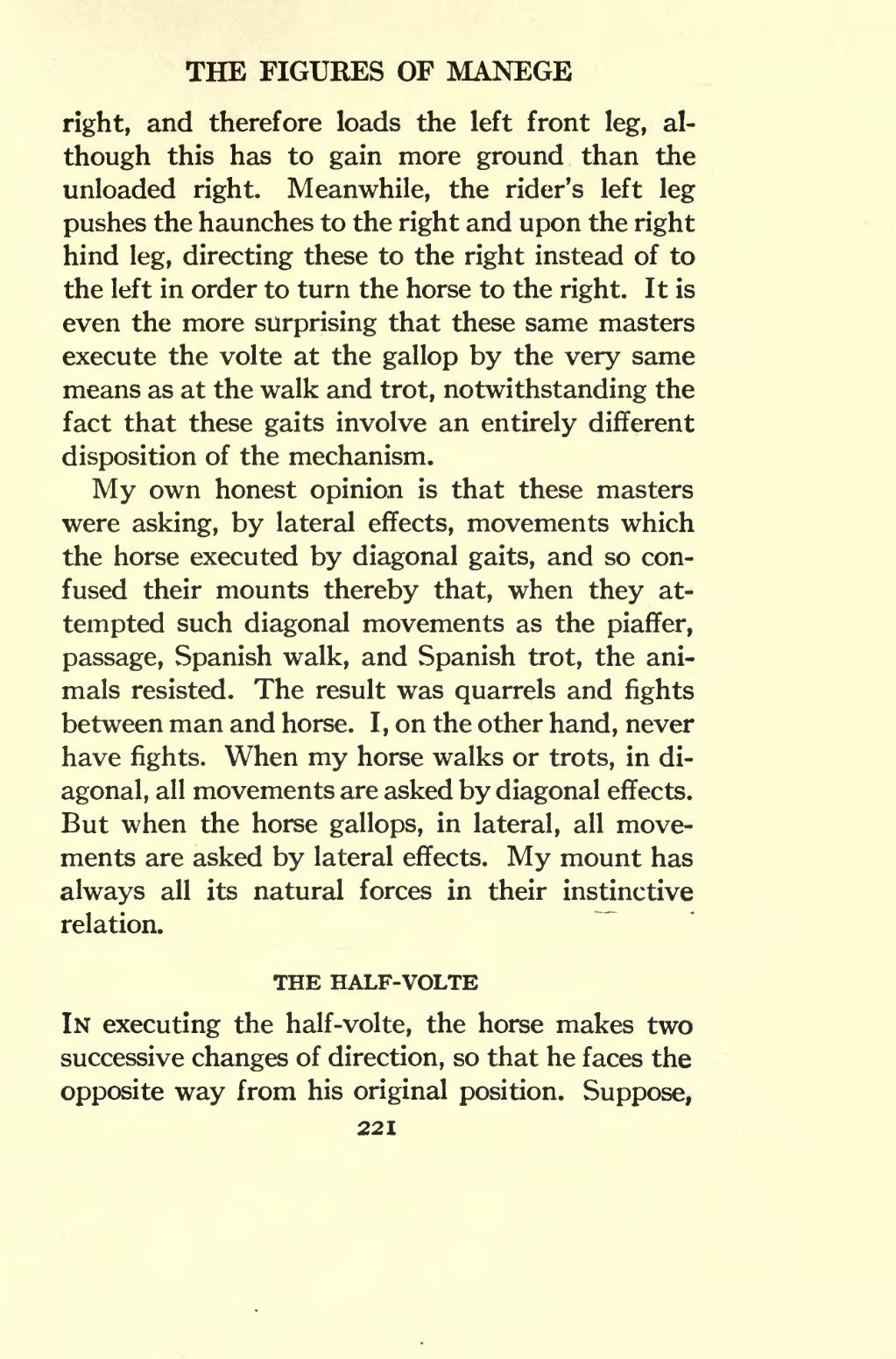right, and therefore loads the left front leg, although this has to gain more ground than the unloaded right. Meanwhile, the rider's left leg pushes the haunches to the right and upon the right hind leg, directing these to the right instead of to the left in order to turn the horse to the right. It is even the more surprising that these same masters execute the volte at the gallop by the very same means as at the walk and trot, notwithstanding the fact that these gaits involve an entirely different disposition of the mechanism.
My own honest opinion is that these masters were asking, by lateral effects, movements which the horse executed by diagonal gaits, and so confused their mounts thereby that, when they attempted such diagonal movements as the piaffer, passage, Spanish walk, and Spanish trot, the animals resisted. The result was quarrels and fights between man and horse. I, on the other hand, never have fights. When my horse walks or trots, in diagonal, all movements are asked by diagonal effects. But when the horse gallops, in lateral, all movements are asked by lateral effects. My mount has always all its natural forces in their instinctive relation.
THE HALF-VOLTE
In executing the half-volte, the horse makes two successive changes of direction, so that he faces the opposite way from his original position. Suppose,

